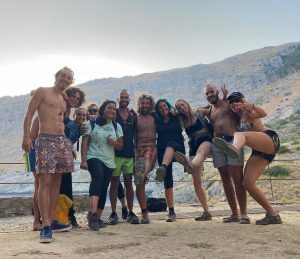Updated on December 15, 2022
Sentinels of Stone of the Marine Park
Here is a little cultural article about the watching towers in the peninsula, based on the conference “Le Sentinelle di pietra – le Torri di Guardia e di Difesa della Costiera di Amalfi e di Sorrento”, organised by the Massa Lubrense Archeoclub on the 30th of September 2022. There were the interventions of Stefano Ruocco (president of the Archeoclub), Salvatore Ferraro (academic), Giovanni Visetti (cartographer) and Don Mario (hosting the event). This event has been the occasion to learn more about the rich heritage and history of the place, with its emblematic buildings that are the towers, spread on the Amalfi and Sorrento coasts. It also has been the occasion to pay tribute to the author of the book the most well documented about this subject¹: Romolo Ercolino, historian from Positano, adoptive Massese who made discover the local history to youngsters of Massa, to diffuse his knowledge, not only through his various books.
In this article, what I would like to put into focus is the story and the existence of the towers on the park coasts. Among the 46 studied in the book (from Castellammare to Vietri sul mare), the towers we are talking about are 13.
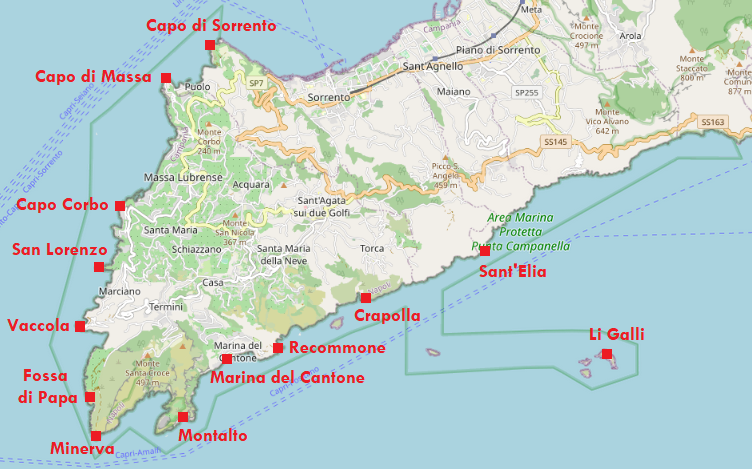
History of the watching towers
For a start, let’s present a little of the context of the towers creation. The building of these towers started in the Middle Age with the goal of alerting and defending the coasts from the Saracens (coming from modern-day Algeria, Tunisia), Turks or Barbarossa squads. When a threat was identified, the guards of the first tower to see it were lighting up a fire during the day, as well as during the night, to report the emergency situation with smoke (during the day) and with flame (at night). This signal was transmitted from one tower to another with the surveillance of the guards who saw the signal on one of the surrounding towers, then repeated the signal to transmit it to the next tower. This allowed to form a chain of information and to warn the populations.
Regarding the towers typology, then have been built and modified during various periods, from the Middle Age onwards, following the change of regimes in the region:
- the round towers, so called “Angevin”, date back from the 1200′-1400′
- the square towers, so called “Aragonese”, date back from the 1500′
- the towers with ulterior modifications made during the Bourbon period, in the 1700′-1800′
According to Salvatore Ferraro, the towers did not reach their goal because they did not achieve to defend the (grain) trade and neither protect from the robberies. In fact, on the 13th of June 1558, the sack of Sorrento during San’Atonino day happened. It has been told that the population was sleeping, with the popular version as “a good excuse of the traitor who opened the doors” according to Ferraro, the chronicles mentioning the fact of a sleeping city. The entire peninsula has been impacted, as despite the existence of the towers, a great part of its inhabitants fled up to Monte Faito.
That is why, the inhabitants settled in high altitude on the Amalfi coast, in order to be able to escape and defend themselves better.
It is also important to know that the defence of the Southern coasts was devolved to the cities from the Spanish central power, during the Aragonese era, for example. Indeed, every tower was armed and defended by the inhabitants close to it.
Then, the towers have been curated until the fall of the Bourbon and the Unity of Italy. During the Bourbon era, public entities, communes were curating the towers. The communes were deemed to not conserve them well, as it has been the case in Punta Campanella, given that the maintenance of the towers was very costly for them.
Regarding the influence of the towers in art, many travellers, painters, artists based in the region, have been inspired by it through the centuries, such as the principal dancer Nureyev who created his artistic shelter in the tower of Li Galli.
Moreover, among the long history of the towers, some Jews have been hiding in the towers during World War II. There is a local story telling about an autochthonous man with a whistle who was signalling the arrival of prefectural controls so they could escape.
The Towers of Punta Campanella MPA from Capo Germano to Capo di Sorrento:
- Li Galli: very important tower to make a connection between the steep coast where there was no tower and the others towers around.
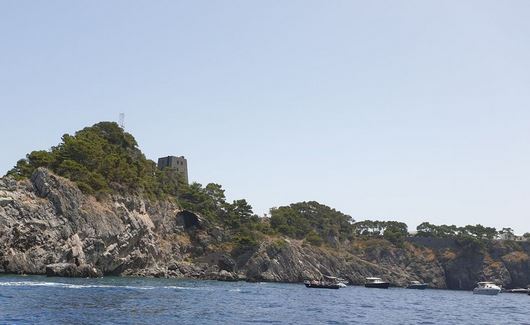
- Sant’Elia
- Crapolla (or di San Pietro ad Capona)
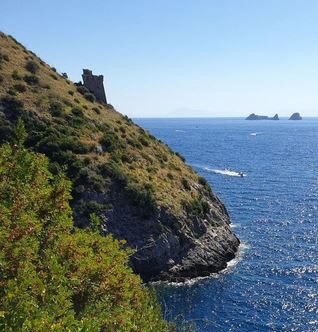
- Recommone
- Marina del Cantone
- Montalto (or della Mortella)
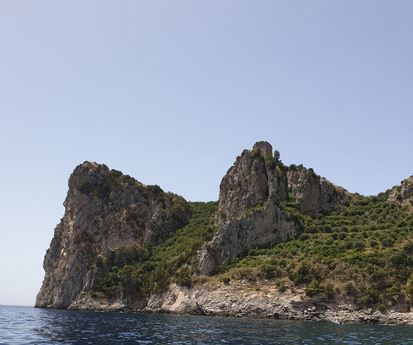
- Minerva (Punta Campanella): its first version is built in the 13th century, and its following shape is in the 16th. Before the tower, there was an Antic temple dedicated to the goddess Minerva.
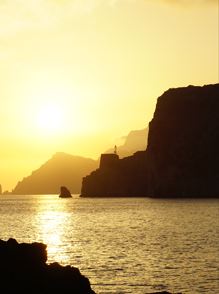
- Fossa di Papa
- Vaccola (Punta Baccoli)
- San Lorenzo
- Capo Corbo (Capo Corvo)
- Capo di Massa (or di Vilazzano)
- Capo di Sorrento: no longer existing tower.
To conclude, as Ferraro pinpoints it, there is a need to make these towers an open-air museum because it consists in a significant work. Don Mario during the conference added that it is fundamental to make youngsters and young people in general understand the richness of the culture and the importance of its conservation.
Massa territory is so rich of cultural and historical heritage; it is needed to raise awareness about this heritage but also to conserve it.
¹ In order to know more, I recommend the reading of ERCOLINO, Romolo, Sentinelle di pietra – le Torri di Guardia e di Difesa della Costiera di Amalfi e di Sorrento, Nicola Longobardi Editore, Castellammare di Stabia, 2022 [untranslated].
— Paul Descoeur




